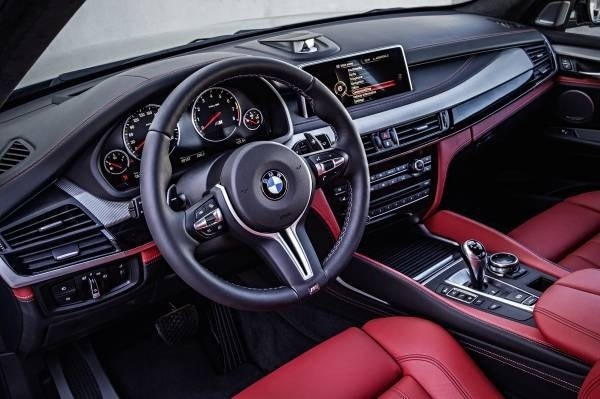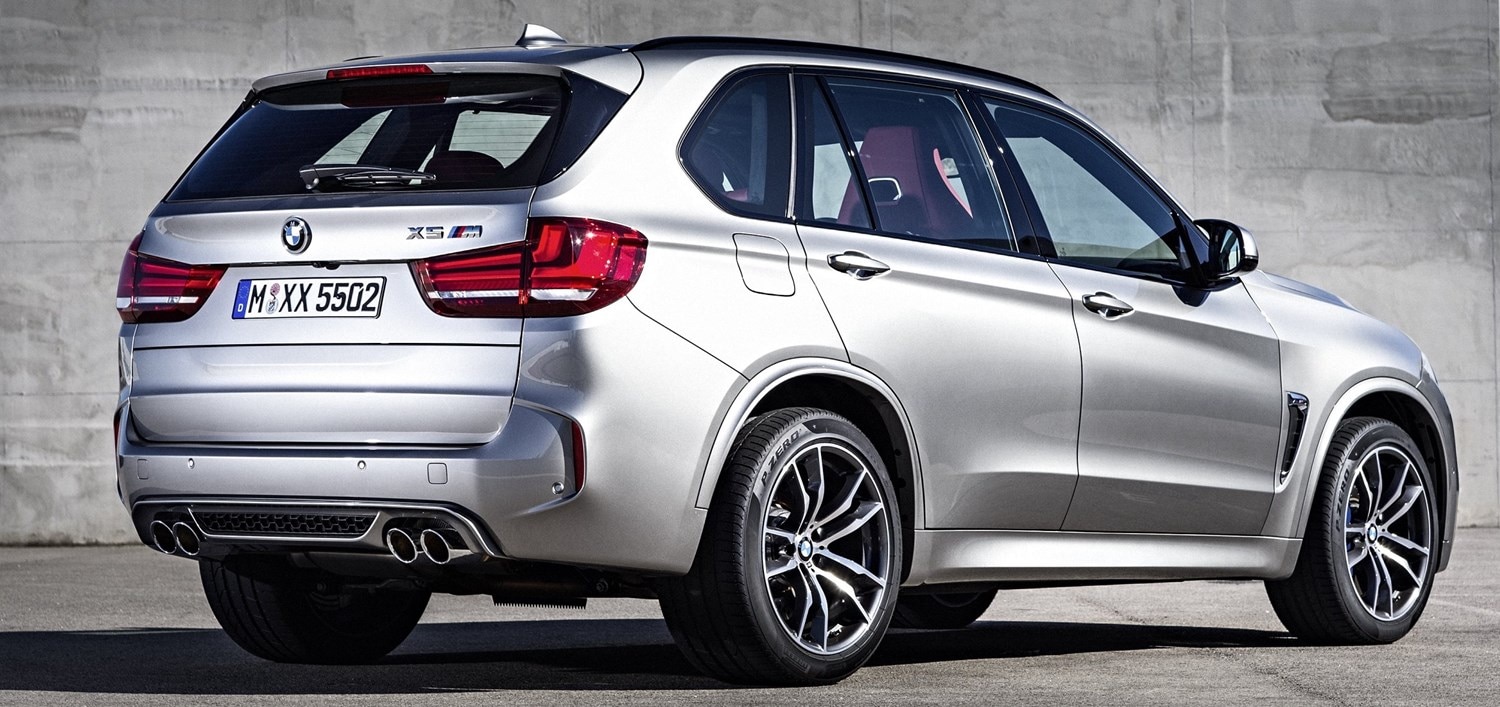History
The X5 was BMW’s first foray into the world of SUVs, and despite only having been in production since 1999, the car has become one of the key players in the luxury 4x4 market.
Since its introduction in 1999, the X5 has been through three generations, yet it is still second only to the Range Rover at the top of the luxury 4x4 tree. In the BMW range, it crowns the SUV line-up by sitting above the smaller X1 and X3 models.
The famous Land Rover model is not its only rival, though, with the Mercedes-Benz GLS (formerly the GL) and the Audi Q7 forming the majority of the competition. The Porsche Cayenne plays in the same segment, too, although that’s a more driver-focused proposition than the others.
Customers aren’t flush for choice when it comes to X5 body shapes, with the classic SUV silhouette representing the sole option. The X5 did spawn the coupe-bodied X6, though, which met with a quite mixed reception when it was introduced.
The engine range is a far less bewildering proposition than you’ll find in many BMWs, with a 2.0-litre diesel and variations on a V6 diesel forming the mainstays of the range, alongside less common plug-in hybrid and petrol V8 options.

Latest model
The third-generation X5 has been on sale since 2013, and although it sits on the same basic underpinnings as its predecessor, it arrived boasting improved comfort and efficiency, as well as new connectivity technology.
Selective Catalytic Reduction was also introduced for diesel models, necessitating a tank of urea-based AdBlue, which breaks down many of the harmful nitrogen oxide particles found in diesel exhaust gases.
The entry level engine is the 2.0-litre diesel-powered 25d, which produces 228bhp, although customers can go for the more potent 3.0-litre models. The cheapest of these is the 30d, which extracts 255bhp from its V6 diesel engine, while those seeking even more effortlessness can opt for the 308bhp 40d.
At the top of the pile, however, is the M50d, which boasts 376bhp and a 0-60mph time of around five seconds.
If big diesel engines aren’t your thing, though, you can have a mammoth 4.4-litre petrol engine with 443bhp or an even more outrageous 567bhp. For a little more efficiency, though, you can have the plug-in hybrid i-Performance model, which uses a 2.0-litre petrol engine and electric motors to provide official fuel economy of 83.1mpg and a 19-mile fully electric range.
Value for money
There are just a couple of trim levels – SE and M Sport – although the M50d and X5M get their own unique specifications. With a starting price of £47,170, SE may be the entry-level trim, but it still offers you plenty of goodies.
As standard, you get satellite navigation, 19-inch alloy wheels, leather upholstery, metallic paint, automatic lights and wipers and a reversing camera, to name but a few.
M Sport models, meanwhile, start at £50,370 and add larger 20-inch alloy wheels, a sporty bodykit and adaptive suspension to the mix, as well as M badges everywhere.
The £67,220 M50d and £92,530 X5M lead the way, though, providing model-specific wheels and a power steering system called M Servotronic.
However, these list prices are by no means the end of the story, because there is a wealth of options BMW will sell you. Four of the paint choices, for example, cost £1,120, while you can spend quite a lot more than that on upgraded alloy wheels.
You’ll have the option of spending four figures on different types of leather, too, and that’s before you so much as look at the packages on offer. If you’ve got an extra £4,000 to spend, you can have adaptive suspension, and if you want the rear-seat infotainment package you’ll need to fork out the best part of £3,000.
Even individual options can be pricey. Adaptive LED headlights cost £1,495 and a third row of seats is only a couple of pounds cheaper.

Looks and image
Though the X5 is undoubtedly one of the most luxurious offerings in the SUV market, it doesn’t always show it. Admittedly, there’s only so much you can do with a five-metre-long, two-tonne lump of metal, but even so it isn’t an especially exciting thing to look at.
In fairness, the M Sport bodykit does liven it up with the more confident bumpers and the flecks of colour provided by BMW’s red and blue M logo, but it’s still a world of bland expanses of metal, not helped by the colour palette that’s limited to a selection of greys, blacks and browns.
The traditional BMW kidney grille, however, remains prominent on the car’s nose, giving the car strong badge appeal.
Inside, the car remains unmistakably a BMW product. The dashboard architecture is a trademark of the brand, and the fit and finish in there is little short of excellent. Proceedings are dominated by the wide infotainment screen atop the dash, which houses the impressive iDrive system.
Controlled via a rotary dial on the centre console, the iDrive is one of the most intuitive on-board computers on the market. The fact it doesn’t use touch controls may put some off, but there are numerous advantages to the format, such as a lack of grubby finger marks on the screen and the fact that once you’ve learned your way around you can use it without taking your eyes off the road.
Space and practicality
With a 650-litre boot, the X5 is a very spacious car. The boot is large enough to permit an optional extra row of seats, bringing the total to seven, although if you fold the middle bench down you can free up a pretty massive 1,870 litres of boot space.
It’s practical with all the seats in place, too, offering plenty of space for passengers in the front and rear. If you go for the optional back seats, though, you’ll have to be well aware that these are just occasional seats that won’t be big enough for adults on long journeys.
What’s under the bonnet?
Just five basic engines are offered on the X5, ranging from the lowly 2.0-litre diesel to the fire-breathing 4.4-litre V8 petrol. It isn’t quite as simple as all that, though, once you start including the varying states of tune.
The basic diesel is available solely in 228bhp 25d guise (although it’s the only engine offered without four-wheel drive), but there are two different versions of the 3.0-litre V6 diesel. You can choose between the ample 255bhp 30d, or the more luxuriant 308bhp 40d derivative. You can also go for the almost obscenely powerful M50d, which wrangles 376bhp from the same 3.0-litre engine.
Petrol options are limited to two 4.4-litre V8s, one powering the 50i with its 443bhp output and the other providing 567bhp for the X5M.
There’s also a plug-in hybrid, which combines a 2.0-litre petrol engine with electric power. The result is a 19-mile all-electric range and 83.1mpg, although diesel versions are likely to prove more efficient in real-world conditions.

Running costs
Because it carries so much bulk, the X5 is unlikely to be cheap to run whichever engine you plump for. Diesels will get through fuel slightly less rapidly than petrols, but everything’s relative.
You can at least take solace from the official figures, which quote the most economical diesel as a 52mpg car, but you’re highly unlikely to manage anything like that in the real world.
Thanks to its desirability and its sizeable price tag, the X5 will also cost quite a bit to insure.
Things to look out for
When buying a new X5, you get a three-year, unlimited-mileage warranty, which means you should be covered if anything goes wrong in the first few years of ownership.
Sadly, some owners have complained about their X5’s reliability, with some customers bemoaning electrical gremlins, as well as a few issues with suspension.
Generally speaking, problems that occur after the warranty period won’t be cheap to fix, though, with BMW dealers notoriously charging big sums to replace parts.
It is also worth noting that the X5 is about to get more expensive to tax, what with the new rules that come into force on April 1, 2017. From that point on, all X5s will cost £450 a year between the second and fifth years of their lives, with some variants costing far more than that in the first year. After five years, though, every X5 variant will cost just £140 per year.
Rivals
The X5’s rivals mostly come from German manufacturers, with the Audi Q7 and Mercedes-Benz GLS constituting the key contenders. The Porsche Cayenne is also a popular choice in this segment, while the VW Touareg offers almost as much of a premium feel without costing so much.
There is some competition from these shores, though, with the Range Rover arguably ruling the roost thanks to its timeless image and seemingly boundless desirability. The new Bentley Bentayga offers something different for those looking at the most luxurious models, too.
Depreciation warning
X5s generally hold their value quite well, thanks to their premium image, although the volatile market might mean demand for the high-powered petrol and diesel engines fluctuates depending on the prevailing public mood.





